- Home
- Michael Byrnes
The Sacred Bones Page 12
The Sacred Bones Read online
Page 12
"I hardly need to remind you what's at stake here," Teleksen said firmly. "We're teetering on the verge of a very unpleasant confrontation with Hamas and the Palestinian Authority. Plenty of people on their side are ready to use any excuse to accuse us of a terrorist act against Islam."
Barton looked at them. "I'll do all I can to find the ossuary."
Teleksen took a final drag that burned the cigarette down to its filter. "If you find this box, notify us both immediately. You'll have complete access to any necessary resources." He tossed the butt onto the floor and stubbed it out with his right foot. "But please keep in mind that next time we meet, we'll require more than just a lesson in archaeology."
Both men stood and made their way out into the gallery.
Once he buzzed Rachel upstairs to confirm that they had left the building, Barton quickly closed the door and excitedly pulled out the cylinder. Uncapping it, he tapped the scroll out onto a clear area of his desk. From boxes on a nearby shelf, he retrieved a pair of latex gloves and a plastic Ziploc bag. Sitting at the desk, he swung the retractable arm of a desk lamp closer, then slipped on the gloves.
After delicately opening the vellum, he slid it face-up into the plastic bag, then gently ironed it flat with his hand. Neatly handwritten in a large font, Barton didn't require a magnifying lens to make out the text. However, he confirmed that he was certainly going to need a translator, because Greek was not his strong point.
And as far as he was concerned, there was only one man in Jerusalem whom he considered an expert.
23.
VATICAN CITY
Charlotte Hennesey was still grappling with the notion that the ossuary's skeletal remains suggested that the thirty-something male subject-- otherwise in pristine health-- exhibited multiple signs of trauma resulting from crucifixion.
She and Bersei were now preparing to establish further evidence reinforcing the subject's identity, estimating date of death. Carbon dating would need to be performed on the bone, and the ossuary itself would need to be examined closely for any telling clues.
Standing in front of the ossuary, they examined its limestone shell.
"I found some information about an ossuary similar to this discovered in Israel in 2002," Bersei said. "On the basis of its inscriptions it was initially thought to have once contained James, the brother of Jesus. Though the ossuary itself was judged authentic, the inscriptions were determined a forgery. Reviewing the forensic analysis on that relic, I've got a pretty good understanding of what to look for here."
"How did they know it was a forgery? What's the difference between genuine carvings and fakes?"
"Occasionally it's a leap of faith," Bersei responded. "But it's mainly the integrity of the patina that legitimizes inscriptions."
"This stuff?" She pointed to a thin layer of muted gray-green sediment that evenly covered the stone.
"Yes-- kind of like the greenish oxidation that occurs on copper. In the case of stone, moisture, sedimentary drip and airborne material builds up naturally over time to form a residue."
"And the patina's organic composition would indicate the type of environment where the ossuary would have been found?"
"Precisely." He put on his reading glasses, peered down at a notepad and read from a list of notations. "Last night, I did some research about ossuaries and it seems that the practice of using them occurred mainly in Jerusalem during the first century BC, and didn't last very long-- only a century or two." He glanced up at her. "Therefore, I'd expect that this limestone, like the James ossuary, was quarried during that period somewhere in Israel."
"Right, the patina's mineral content should then be consistent with geological elements in that region," she said. "But wait a second, Giovanni. Assuming this ossuary falls into that category, that would mean this is about two thousand years old."
"Correct. And seeing as crucifixion was commonly practiced during that period, it appears that we're on track."
Hennesey peered closely at the patina. "So if the stone was tampered with, wouldn't the patina be disrupted?"
"Correct again," Bersei smiled.
"Is there any way to date the stone?"
He considered this for a second. "It's possible," he admitted, "but not very useful."
"Why not?"
"We're not really concerned with when the limestone was formed. The stone itself will be millions of years old. We'd be much more interested in when it was quarried. The patina and inscriptions are probably our best gauges determining its age."
"Aha." Charlotte pointed to the fused symbol of the dolphin and trident. "Think we'll be able to determine what that means?"
"I'm fairly certain it's a pagan symbol," Bersei continued. "It's funny, I know I've seen this somewhere before. First, let's figure out if this patina's legitimate."
"While you finish analyzing the ossuary, I'll work on preparing a bone sample for carbon dating." She motioned across the room to the skeleton.
"Sounds good. By the way," Bersei reached for his notepad and jotted something down. "Here's the name and number of my contact at an AMS lab here in Rome." He tore off a sheet. "Tell him I referred you. Say we're doing work for the Vatican and need immediate results. That should get his attention. And request that he call back with the results straight away. The dating certificate can be sent later."
Hennesey read it. "Antonio Ciardini?"
"Pronounced Char-dini. Old friend of mine, plus he owes me a favor."
"Okay."
"And don't worry, his English is pretty fluent." Bersei glanced at his watch: a quarter after one. "Before you do that, how about taking a lunch break?"
"I'd love to. I'm starving."
"The tuna sandwich didn't appeal to you?"
"Not my idea of Italian cuisine."
24.
JERUSALEM
Graham Barton turned off Souk El-Dabbagha in the Christian Quarter and stopped briefly to admire the magnificent facade built by twelfth-century Crusaders that masked the original crumbling edifice of the Church of the Holy Sepulchre.
Christian pilgrims flocked to Jerusalem to retrace Christ's footsteps along the fourteen "stations" from flagellation to crucifixion-- the "Way of Sorrows," better known as the "Stations of the Cross." The journey would begin at a Franciscan Monastery on the Via Dolorosa, just beneath Temple Mount's northern wall-- the site where many Christians maintained that Christ had taken up the cross after being scourged and crowned with thorns. Stations ten through fourteen-- where Christ was stripped, nailed to the cross, died, and was taken from the cross-- were commemorated in this church.
After all that had happened in Jerusalem over the past few days, Barton wasn't surprised that there weren't many tourists here today. He made his way into the main entrance.
Beneath the church's massive rotunda high above two tiers of circular Roman colonnades, Barton walked a circle around a small mausoleum embellished with elaborate gold ornamentation. Inside this small structure was the most sacred site in the church-- a marble slab that covered the rock where Christ had been laid out for burial.
"Graham?" a warm voice called out. "Is that you?"
Barton turned to face a corpulent old priest with a long white beard, dressed in the ceremonial garb of the Greek Orthodox Church: a flowing black soutane and a substantial black pipe hat.
"Father Demetrios." The archaeologist smiled.
The priest clasped Barton with both his pudgy hands, fingers like sausages, and pulled him slightly closer. "You look good, my friend. So what brings you back to Jerusalem?" He spoke with a heavy Greek accent.
It had been almost a year and a half since Barton first met the priest to arrange for an exhibit of some of the Sepulchre's Crusader-era crucifixes and relics in the Museum of London. Father Demetrios had graciously loaned the items to the museum for a three-month period, in exchange for a generous donation.
"Actually, I was hoping you'd be able to help me translate an old document."
"Of course," the p
riest cheerily replied. "Anything for you. Come, walk with me."
Strolling beside Father Demetrios, he eyed the numerous clerics milling about the space. The Greek clergy was compelled by a long-standing Ottoman decree to share this space with the church's other resident sects-- Roman Catholics, Ethiopians, Syrians, Armenians, and Copts-- and throughout the Sepulchre, each had erected their own elaborate chapels. It was a haphazard arrangement both physically and spiritually, Barton thought. From somewhere in the church, he heard a requiem being chanted.
"Rumor has it that the Israelis have called you in to assist in the investigation over at Temple Mount," the priest whispered. "Is there any truth to that?"
"I'd rather not say."
"I don't blame you. But if it is true, please tread lightly, Graham."
The priest led him into the Greek Orthodox chapel known as "the Center of the World," named for a stone basin in its center that marked the spot ancient mapmakers had designated as the divide between east and west. From his last visit, Barton knew that Father Demetrios felt most comfortable here, on his own turf.
On the side wall stood a Byzantine shrine, covered with gold ornamentation and dominated by a massive gold crucifix boasting a life-sized, solar-haloed Christ, flanked by two Marys looking up in mourning. At the altar's base was a glass enclosure encasing a rocky outcropping where Christ had supposedly been crucified. Golgotha.
The twelfth station of the cross.
In front of the altar, the priest made the sign of the cross, then turned to Barton. "Show me what you have, Graham." He reached beneath his vestment and produced a pair of reading glasses.
Barton pulled the plastic-sealed vellum from his breast pocket and handed it over.
The priest fingered the Ziploc bag. "Good to see you've employed the latest technology. Now let's see what you have here." Putting on his glasses, he held the document higher against the ambient glow of an ornate hanging candelabrum and studied the text intently. Seconds later a blanched expression came over him and his lower lip sagged. "Oh my."
"What is it?"
The priest looked concerned. Scared.
He peered at Barton over his glasses. "Where did you find this?" he asked quietly.
Barton considered telling him. "I can't say. I'm sorry."
"I see."
By the look in his eye, it was obvious that the priest already knew the answer. "Can you tell me what it says?"
Father Demetrios scanned the chapel. Three rival priests, dressed in Franciscan cassocks, were loitering close by. "Let us go downstairs." He motioned for Barton to follow.
Father Demetrios led him down a wide staircase that wound beneath the nave.
Barton was pondering how the ancient words could have so spooked the old priest. Deeper they went, until stone brick walls gave way to cool, hewn earth.
Standing in what looked like a cave, the priest finally stopped. "You know this place?"
"Of course," Barton said, scanning the low-hanging rocky ceiling that bore telltale marks of mining activity. "The old quarry." His eyes wandered briefly to the wall behind the priest where hundreds of Knights Templar equilateral crosses had been carved into the rock-- twelfth-century graffiti.
"The tomb," the priest corrected him, pointing to the long burial niches carved into the far wall. "Though I know your reservations in wanting to accept this idea."
Where Helena was also lucky enough to unearth Christ's cross, too, he wanted to say, but curbed his response. The fact that Constantine's elderly mother had personally selected this site-- formerly a Roman temple where pagans once worshipped Venus-- left little doubt that its authenticity was questionable. Though he was no stranger to the divergent views of the historical versus the religious, he wasn't about to offend him with blasphemy.
"There's another very sacred tomb just above us," Father Demetrios reminded him with a serious face.
"And why have you brought me down here? Is it something about this scroll?"
"Everything about it." His voice was solemn. "I don't know where you found this, Graham. But if it wasn't from here-- and I know it's not-- I caution you. Be very, very careful. You know better than most how words can be misconstrued. If you promise me you'll remember what I've said, I will write down your translation."
"You have my word."
"Good." The priest shook his head and let out a deep breath. "Let me have your pen and paper."
25.
VATICAN CITY
Each time Father Patrick Donovan walked down the Apostolic Palace's grand corridor he felt intimidated. This was the gateway to the Vatican's royalty-- the physical apex of Christendom's hierarchy. Adjoining the far end of the Vatican Museum, it housed the offices of the pope and the secretary of state, while an upper floor contained the pope's lavish Borgia apartment. The entire complex, as big as an airport concourse, felt like an extension of the museum itself with its floor-to-ceiling frescos, marble floors, and baroque embellishments.
Here the Vatican City's military was most evident, expressionless Swiss Guards posted at even intervals and seeing them only added to his nerves.
Tall porticos ran along one side of the corridor, overlooking the Piazza San Pietro-- Bernini's massive, elliptical courtyard, which had been completed in 1667. Four sweeping arcs of colonnades embraced the space, pinpointing at its center Caligula's obelisk that had been plundered from the Nile Delta in 38 CE. The relic sharply reminded Donovan of the pillaging done in Jerusalem only four days ago.
Large rectangular windows on the hall's opposite side were sheathed in iron grating, serving notice that this building had been initially designed as a fortress.
The looming double door at the corridor's terminus was flanked by two Swiss Guards in full costume-- billowing gold and Medici blue-striped tunics and pantaloons, red berets, and white gloves. Conte's buffoons. Each carried an eight-foot long pole called a "halberd"-- a sixteenth-century weapon that combined speared tip, axe blade, and grappling hook. Donovan noticed that both soldiers also carried holstered Berettas.
He stopped two meters in front of the doorway.
"Buona sera, Padre. Si chiama?" The tall guard to his right demanded his name.
"Father Patrick Donovan," he responded in Italian. "I have been summoned by His Eminence, Cardinal Santelli."
The guard disappeared into the room beyond. A few uncomfortable moments passed while Donovan stared vacantly at the floor, the remaining Swiss Guard stood at attention in perfect silence. The first guard reemerged. "He is ready to see you."
The librarian was ushered into an expansive antechamber furnished in marble and wood where Santelli's personal assistant, the young Father James Martin, manned a lone desk, his face blank and withdrawn. Donovan smiled warmly and exchanged pleasantries with him, trying to imagine just how mentally taxing it must be for him to be at the beck and call of a man like Santelli.
"You may go right in," Father Martin said, motioning to a huge oak door.
Opening the door, Donovan moved into the lavish space beyond. Across the sumptuous room, he saw a purple skullcap and the familiar mound of thick silver hair poking over the back of a tall leather chair.
The Vatican secretary of state was facing a window that neatly framed St. Peter's Basilica, a phone held to his right ear, frail hands gesticulating. Swiveling round, Donovan was met by the bloodshot eyes, bushy eyebrows, and heavy jowls of Cardinal Antonio Carlo Santelli. The cardinal motioned him toward an armchair in front of the substantial mahogany desk.
Donovan plunked himself down, the upholstery groaning as he shifted in the seat.
As the Vatican's highest-ranking cardinal, Santelli was charged with overseeing the political and diplomatic issues of the Holy See, effectively acting as prime minister of the Roman Curia, accountable only to the pope himself. Though even the pope occasionally acquiesced to Santelli's demands.
The man's political skills were legendary. As a newly appointed cardinal in the early 1980s, he'd steered the Vatican through the mu
rky recesses of the Banco Ambrosiano scandal and the murder of Roberto Calvi, the so-called "God's Banker," who had been found hung by the neck under Blackfriars Bridge in London.
While the cardinal wrapped up his conversation, Donovan took in this inner sanctum of the pontifical machine. Santelli's immense desk was bare, save for a short stack of crisp reports arranged at a perfect perpendicular, and an oversized plasma monitor mounted on an arm. The screensaver was on-- a golf-green, its flag fluttering against a virtual breeze reading: "All We Need Is Faith." A great enthusiast for IT, Santelli had been the main advocate for the installation of the Vatican's sophisticated fiber-optic network.
In the corner, a marble-topped credenza supported a replica of Michelangelo's Pieta. Dominating the space to his right was a large tapestry depicting Constantine's battle at Milvian Bridge. To Donovan's left three Raphaels hung-- almost casually-- against the wine-colored wall.
His gaze circled back to Santelli.
"Advise him the final decision will be made by the Holy Father," the cardinal was saying in thick Italian. Santelli was always direct. "Call me when it's done." He replaced the phone. "Prompt as always, Patrick."
Donovan smiled.
"After the appalling mess left behind in Jerusalem, I trust you're bringing me good news. Tell me all our efforts have been worthy of such sacrifice."
Donovan forced himself to look Santelli in the eye. "There's enough evidence to lead me to believe the ossuary's genuine."
The cardinal grimaced. "But you're not certain?"
"More work needs to be done. More tests." Donovan knew his voice was wavering. "But so far, the evidence is compelling."
There was a small silence.
The cardinal cut to the chase. "But is there a body?"
Donovan nodded. "Just as the manuscript suggested."
"Splendid."
"Will the Holy Father be told?"
"I'll handle that when the time's right." Elbows on the chair's armrests, Santelli had woven his fingers together, as if in prayer. "When will these scientists be ready to make a formal presentation?"

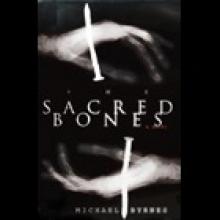 The Sacred Bones
The Sacred Bones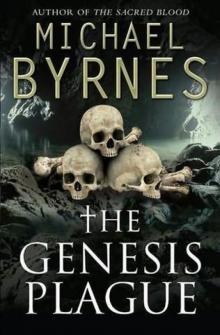 The Genesis Plague (2010)
The Genesis Plague (2010)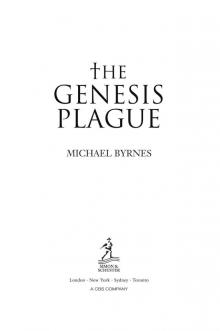 The Genesis Plague
The Genesis Plague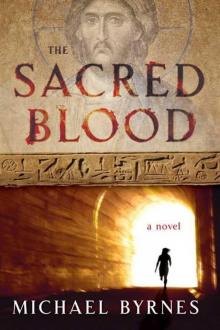 The Sacred Blood
The Sacred Blood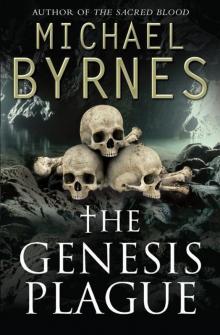 The Genesis Plague tf-1
The Genesis Plague tf-1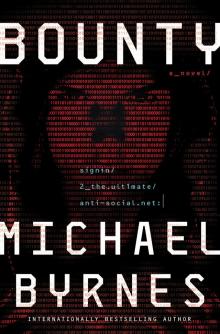 Bounty
Bounty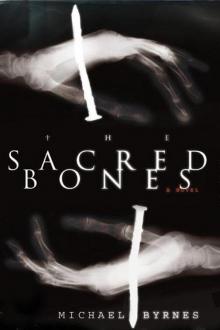 Sacred Bones : A Novel
Sacred Bones : A Novel